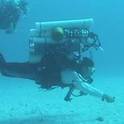
Ocean color measured from satellites provides daily, global estimates of marine inherent optical properties (IOPs). Semi-analytical algorithms (SAAs) provide one mechanism for inverting the color of the water observed by the satellite into IOPs. While numerous SAAs exist, most are similarly constructed and few are appropriately parameterized for all water masses for all seasons. To initiate community-wide discussion of these limitations, NASA organized two workshops that deconstructed SAAs to identify similarities and uniqueness and to progress toward consensus on a unified SAA. This effort resulted in the development of the generalized IOP (GIOP) model software that allows for the construction of different SAAs at runtime by selection from an assortment of model parameterizations. As such, GIOP permits isolation and evaluation of specific modeling assumptions, construction of SAAs, development of regionally tuned SAAs, and execution of ensemble inversion modeling. Working groups associated with the workshops proposed a preliminary default configuration for GIOP (GIOP-DC), with alternative model parameterizations and features defined for subsequent evaluation. In this paper, we: (1) describe the theoretical basis of GIOP; (2) present GIOP-DC and verify its comparable performance to other popular SAAs using both in situ and synthetic data sets; and, (3) quantify the sensitivities of their output to their parameterization. We use the latter to develop a hierarchical sensitivity of SAAs to various model parameterizations, to identify components of SAAs that merit focus in future research, and to provide material for discussion on algorithm uncertainties and future emsemble applications.
Available at: http://works.bepress.com/emmanuel_boss/27/
